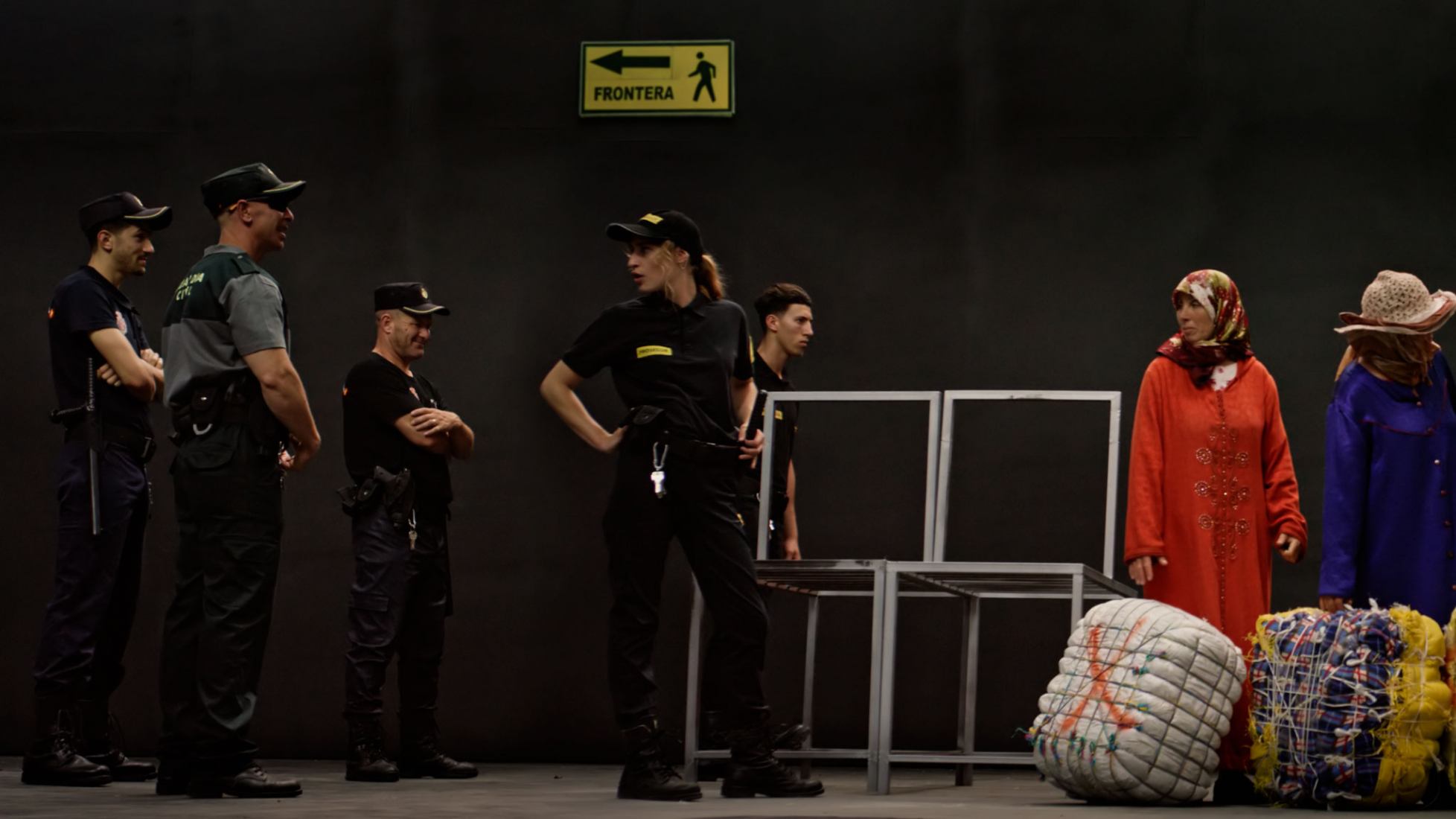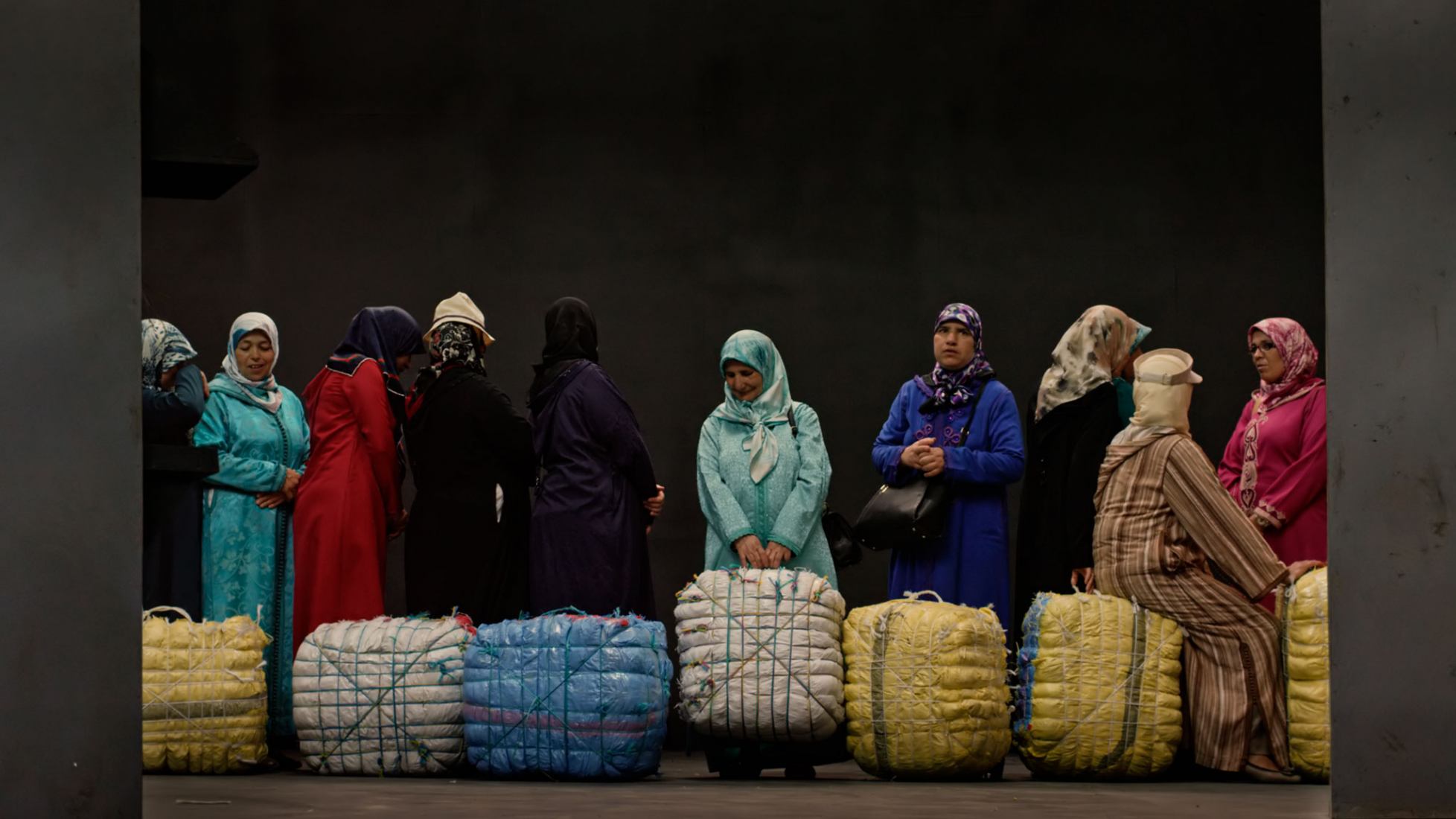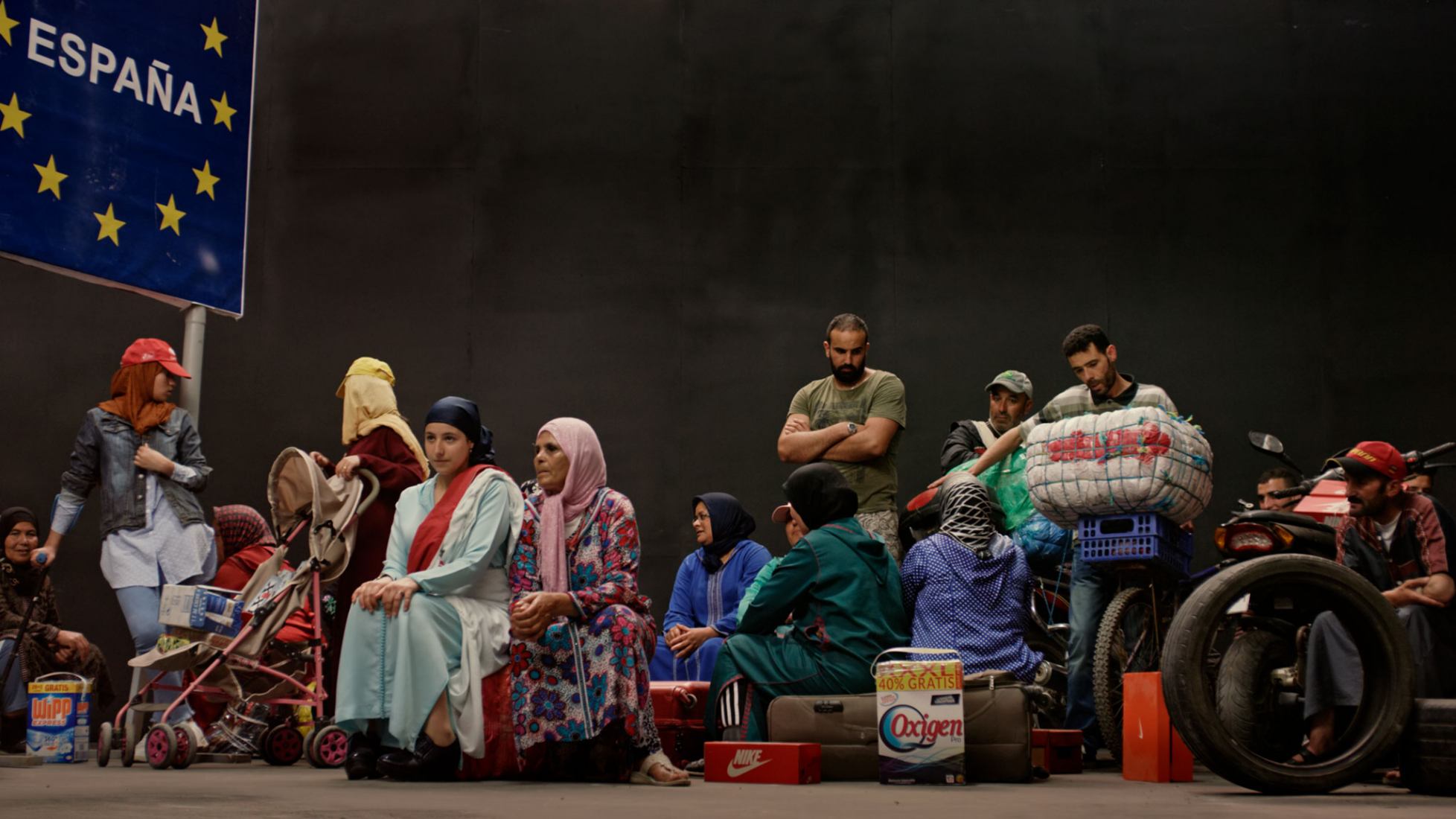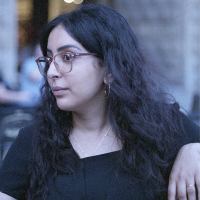The film Bal Sebta from Randa Maroufi represents various scenes experienced at one of the border crossings between Morocco and Spain in Ceuta, where an intense transit of people and goods takes place every day, generating daily movements and relationships that for the artist take on an almost performative character. Within the framework of the exhibition, Artium Museoa publishes a new publication in the Sala Z series with text by the researcher and art curator Salma Mochtari. The Sala Z program has the support of MONDRAGON.
The film reconstructs situations at one of the three land border crossings between Morocco and Spain in Ceuta and, therefore, between Africa and the European Union. Thousands of people depend on crossing this border every day, where there is intense trafficking of smuggled goods that are sold in northern Morocco at advantageous prices.

Bab Sebta, The Gate of Ceuta by Randa Maroufi. Photograph by Randa Maroufi.
Maroufi has followed the routes of some of these people and observed the daily life of the border where the police and Spanish customs agents exercise control that is challenged by the different strategies of the smugglers who patiently wait for their turn to cross.
The borders that separate nation-states are generally places that oscillate between control and more or less controlled porosity. In the case of Ceuta, Maroufi observes the almost performative nature of the rituals implicit in the transit of goods and people from one place to another and the interactions and negotiations that make them possible. The way in which relationships are structured in certain spaces and how people move in them is a starting point in many Maroufi projects.
Bab Sebta is not a documentary film, but a form of interpretation of a coded liminal space. Made in a factory transformed into a filming studio, Maroufi collaborated with people who make the transfer between Morocco and the enclave of Ceuta, using two points of view, one from above that refers to a distanced and supposedly objective look at the territory, while the shots frontals allow us to approach in an affective way the gestures, corporalities and materialities that make up these scenarios.

Bab Sebta, The Gate of Ceuta by Randa Maroufi. Photograph by Randa Maroufi.
Room Z
The Sala Z program (for zinema, cinema in Basque) is a project that builds an intermediate space from which to reflect and make visible works by artists who venture into the cinematographic territory and filmmakers who explore the exhibition format. This is a program born from an interest in recognizing the importance of thinking about the moving image from a contemporary perspective and its space within the museum. A program that wants to bring audiences closer to authors interested in the search for new narrative forms to rethink the genres that historically categorize cinematographic language.
To date, Patricia Esquivias (Caracas, 1979), Rosalind Nashashibi (London, 1973), Eric Baudelaire (Salt Lake City, 1973), Aura Satz (Barcelona, 1974), Ainara Elgoibar (Mungia, 1975), Ephraim Asili (Roslyn, 1979), Edurne Rubio (Burgos, 1974), Irati Gorostidi (Valle de Egües, 1988) and Mirari Echávarri (Pamplona, 1988), Laida Lertxundi (Bilbao, 1981) and Naomi Rincón Gallardo (Raleigh, 1979) .
The film reconstructs situations at one of the three land border crossings between Morocco and Spain in Ceuta and, therefore, between Africa and the European Union. Thousands of people depend on crossing this border every day, where there is intense trafficking of smuggled goods that are sold in northern Morocco at advantageous prices.

Bab Sebta, The Gate of Ceuta by Randa Maroufi. Photograph by Randa Maroufi.
Maroufi has followed the routes of some of these people and observed the daily life of the border where the police and Spanish customs agents exercise control that is challenged by the different strategies of the smugglers who patiently wait for their turn to cross.
The borders that separate nation-states are generally places that oscillate between control and more or less controlled porosity. In the case of Ceuta, Maroufi observes the almost performative nature of the rituals implicit in the transit of goods and people from one place to another and the interactions and negotiations that make them possible. The way in which relationships are structured in certain spaces and how people move in them is a starting point in many Maroufi projects.
Bab Sebta is not a documentary film, but a form of interpretation of a coded liminal space. Made in a factory transformed into a filming studio, Maroufi collaborated with people who make the transfer between Morocco and the enclave of Ceuta, using two points of view, one from above that refers to a distanced and supposedly objective look at the territory, while the shots frontals allow us to approach in an affective way the gestures, corporalities and materialities that make up these scenarios.

Bab Sebta, The Gate of Ceuta by Randa Maroufi. Photograph by Randa Maroufi.
Room Z
The Sala Z program (for zinema, cinema in Basque) is a project that builds an intermediate space from which to reflect and make visible works by artists who venture into the cinematographic territory and filmmakers who explore the exhibition format. This is a program born from an interest in recognizing the importance of thinking about the moving image from a contemporary perspective and its space within the museum. A program that wants to bring audiences closer to authors interested in the search for new narrative forms to rethink the genres that historically categorize cinematographic language.
To date, Patricia Esquivias (Caracas, 1979), Rosalind Nashashibi (London, 1973), Eric Baudelaire (Salt Lake City, 1973), Aura Satz (Barcelona, 1974), Ainara Elgoibar (Mungia, 1975), Ephraim Asili (Roslyn, 1979), Edurne Rubio (Burgos, 1974), Irati Gorostidi (Valle de Egües, 1988) and Mirari Echávarri (Pamplona, 1988), Laida Lertxundi (Bilbao, 1981) and Naomi Rincón Gallardo (Raleigh, 1979) .

































